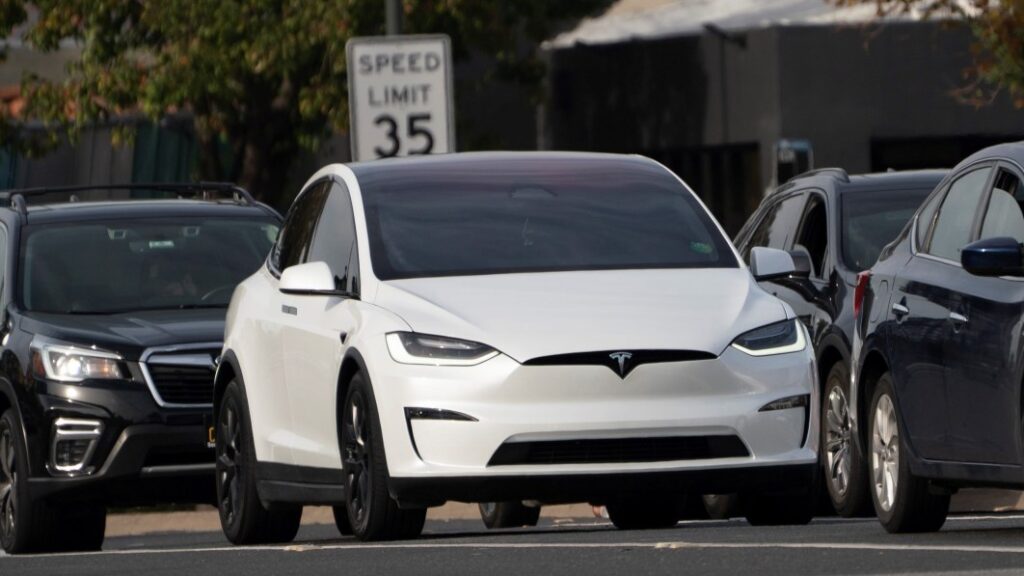Engineer's testimony explains Tesla Autopilot's reliance on lane markings

Tesla is set to go to trial for a wrongful death lawsuit that accuses the company of rolling out a “defective” Autopilot system.Li Jianguo/Xinhua via Getty Images
Tesla is set to go to trial Tuesday over a wrongful death lawsuit regarding a fatal crash in 2018.
A deposition from a Tesla engineer obtained by WaPo reveals how Tesla’s Autopilot works.
The engineer testified under oath that the Autopilot follows “clearly marked lane lines,” per WaPo.
Newly reported testimony from a Tesla engineer is providing rare insight into how the electric car’s Autopilot feature functions and what occurred at the time of a fatal 2018 car crash in California.
Tesla is set to go to trial on Tuesday for a wrongful-death lawsuit filed by the family of Walter Huang, an Apple engineer who died in March 2018 after his Model X crashed into a safety barrier on a California highway.
The family accuses Elon Musk’s company of misleading consumers about its car’s Autopilot system and knowingly rolling out a “defective” feature.
In July 2023, attorneys for Huang’s family deposed Akshay Phatak, a Tesla engineer, to get further insight into how the vehicle’s Autopilot system functions. The deposition was obtained and reported on by The Washington Post.
The engineer revealed to the family’s lawyers that the car steers itself by relying on marked lanes on the highway — a design similar to the lane departure warning systems that can be found in many modern cars, but one that Tesla has advertised as part of its advanced “Autopilot” technology, the Post reported.
“If there are clearly marked lane lines, the system will follow the lane lines,” Phatak said under oath, according to the Post. He added that Tesla’s system was “designed” to follow the lane lines of the highway.
According to attorneys for the Huang family, Huang was driving on a highway with Autopilot activated when his Model X approached a “paved gore area,” a buffer zone located at the intersection of a highway and an exit ramp.
The Autopilot feature then turned Huang’s vehicle “left, out of the designated travel lane, and drove it straight into a concrete highway median,” the attorneys claimed in the lawsuit.
The Post reported the car drifted as the lane markings on the highway faded. According to the report, the vehicle then detected a clearer marking on the left, pulling the car and making it head straight for the barrier.
A spokesperson for Tesla did not respond to a request for comment sent during the weekend.
Chief among Tesla’s defenses is that the crash was ultimately due to Huang’s inattentiveness. Tesla’s attorneys argued in a court filing that had Huang “been paying attention to the road he would have had the opportunity to avoid this crash,” Reuters reported.
Lawyers for Tesla plan to bring in testimony from an Apple engineer who claims that data from Huang’s iPhone indicates he was using his device before the fatal crash.
The National Transportation Safety Board previously concluded in its probe that there was no singular cause for the crash. The agency said that Tesla’s Autopilot had “system limitations” and that the vehicle’s “ineffective monitoring of driver engagement” contributed to the driver’s “complacency and inattentiveness.”
Phatak also said in his deposition that Tesla’s Autopilot system will work as long the car’s cameras detect markers on the road, according to the Post report.
“As long as there are painted lane lines, the system will follow them,” Phatak said, according to the Post.
The Post previously reported that Tesla’s assisted-driving software is sometimes enabled on roads for which it’s not designed.
Attorneys for the Huang family did not respond to a request for comment sent during the weekend.



